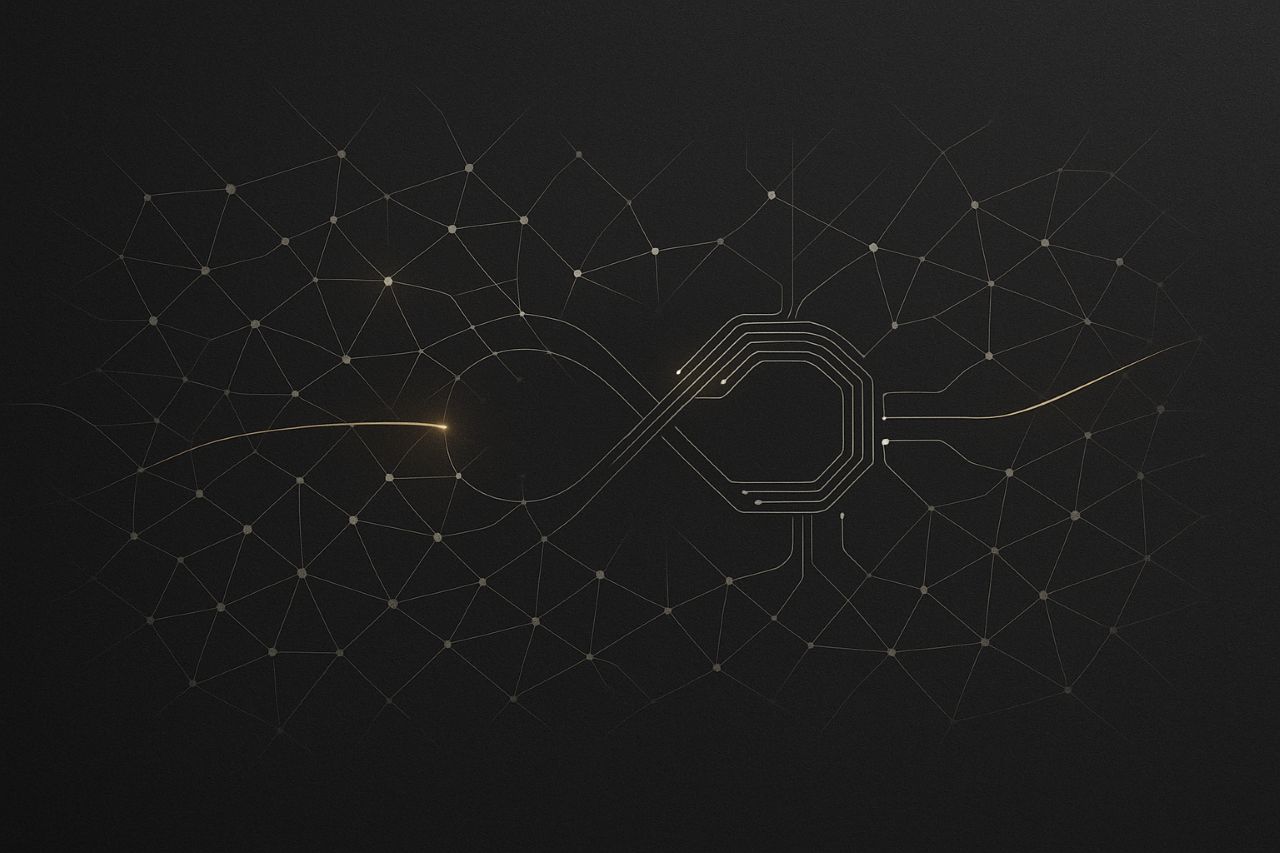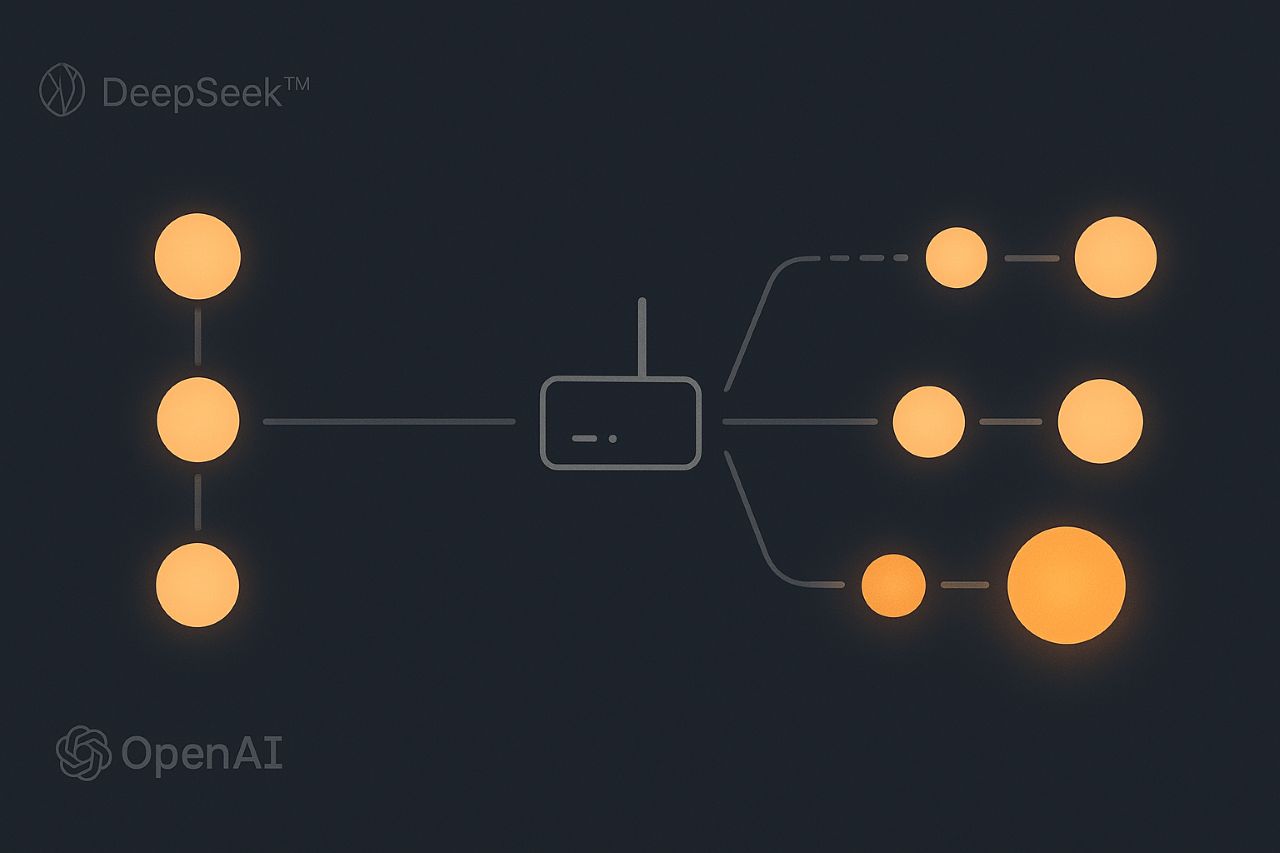Key Highlights
- DeepSeek’s R1 hit No. 1 in the U.S. App Store, triggering a market scare and a strategy rethink.
- Nvidia logged a record one-day value drop (~$589–$600B) before rebounding to record highs.
- “Is DeepSeek better than OpenAI?” It depends: R1 is strong in math/software; o1 leads in broad reasoning.
- OpenAI released open-weight models (gpt-oss) and then launched GPT-5—evidence of a two-track future.
- U.S. scrutiny of DeepSeek is intensifying; its policy places user data on PRC servers.
- Expect hybrid stacks: local open-weights for privacy/control plus APIs for frontier tasks.
It started like a jump cut. A weekend surge pushed DeepSeek’s R1 app to No. 1 in the U.S. App Store, displacing ChatGPT and jolting the Valley out of cruise control. By Monday, markets were wobbling and boardrooms were asking the same question: did DeepSeek changed AI—or just the vibes?
The shock was real. Nvidia briefly suffered the largest single-day value wipeout in U.S. history—nearly $600 billion—as investors stared down the possibility that clever engineering might beat brute-force spending. Then, almost as quickly, the narrative began to correct. Shares rebounded; appetite for compute didn’t exactly vanish. But the strategy deck had been reshuffled.
Is DeepSeek Better Than OpenAI? What the Benchmarks Really Say
Short answer: sometimes, and it depends what you measure. On math-heavy tasks, DeepSeek-R1 often keeps pace or edges ahead; on broad, open-ended reasoning, OpenAI’s o1 tends to lead. Coding is close to a draw. So if you’re asking “Is DeepSeek better than OpenAI?” the honest read is context over headlines—task, latency budget, and guardrails matter more than leaderboard bragging rights.
Zoom out, and the punchline is efficiency: R1 helped normalize the idea that “right-sized” models can deliver at sane costs. That doesn’t make frontier-scale redundant; it makes the stack tiered. Teams increasingly pair a smaller model for routine work with a heavier model for tougher lifts. Less sizzle, more system design.
The Market Shock That Rewrote the Narrative
The frenzy was measurable. After DeepSeek hit No. 1 on iOS, Nvidia shed roughly $589–$600 billion in a day—an unprecedented move—before recovering in subsequent sessions and, weeks later, notching fresh records. The message wasn’t “chips are dead.” It was “efficiency changes margins and winners.”
By early summer, Nvidia’s valuation hit new highs, underscoring a subtler reality: cheaper, capable models can actually increase aggregate demand for compute (hello, Jevons-paradox-meets-AI). The market began pricing in both paths—the scale race and the efficiency race—often inside the same companies.
How DeepSeek changed AI—and What is the next big AI thing?
DeepSeek’s real legacy is cultural: it shoved the industry toward open weights and right-sized reasoning. Days before GPT-5, OpenAI released two open-weight models (“gpt-oss”), its first such release in five years—a notable pivot in tone and tactics. Then GPT-5 landed, with smarter routing and stronger “with-thinking” answers. This is the “next big AI thing” for most users: not magic AGI, but better orchestration, cheaper local options, and faster iteration.
Expect hybrid stacks: open-weight models running on-device or on private clouds, switching to frontier APIs for hard problems. That mix is already reshaping procurement, privacy reviews, and latency targets—pragmatism over purity, speed over spectacle.
Security, Sovereignty, and the China Question
Security concerns didn’t fade. U.S. officials began probing DeepSeek’s ties and data practices; lawmakers pressed Commerce to investigate whether American user data—or model capabilities—could benefit Chinese state entities. Separate from the politics, DeepSeek’s own privacy policy notes that user data may be processed and stored on servers in the People’s Republic of China. That’s a governance decision every CIO must weigh.
Practical response? Some firms sandbox R1 locally; others default to U.S.-hosted open-weights for sensitive workflows. Policy is moving too: the White House’s AI Action Plan frames compute, data centers, and export rules as national priorities—an industrial policy backdrop that will shape enterprise AI choices for years.
Conclusion
Did DeepSeek changed AI? Yes—by forcing a reset. It proved that clever training, reasoning-oriented objectives, and open-weight releases can bend the cost curve without cratering capability. That doesn’t kill the scale game; it broadens the playbook.
The second-order effect is already here: OpenAI’s open models, GPT-5’s routing, and a more modular enterprise stack. Meanwhile, the geopolitics—and the compliance checklists—get heavier. The smartest teams will treat model choice like infrastructure, not fashion: mix open and closed, match model to task, and keep a tight loop on data governance and cost per result.
FAQ
Is DeepSeek better than OpenAI?
Sometimes. R1 often matches or beats o1 in math/coding; o1 still leads on broad, open-ended reasoning. Pick per task, latency, and risk profile.
Did DeepSeek really cost only ~$5.6M to train?
That figure refers to a single run and is debated; total program costs (experiments, data, retries) are likely far higher. Treat $5.6M as a headline, not a budget.
What is the next big AI thing?
Orchestration and openness: open-weight models for local/private use, smarter routers (à la GPT-5) that auto-select the right model, and “right-sized” reasoning for cost control.
Is DeepSeek safe for enterprise use?
Depends on your data posture. Its policy allows processing/storage in China; regulators are probing links and export issues. Consider local hosting or U.S.-based open weights for sensitive work.
Why did Nvidia plunge if AI demand is booming?
Efficiency scares can hit margins and narratives. Markets overreacted, then recalibrated as demand for compute remained robust and shares hit new highs.




tikiokviral
bangzay
wennycake
wennycake
tikiokviral
Jetstar Australia
Kass Theaz
bangzay
Crypto
Keno
BTC
Linktree Cryptozink11
KRIPTO11
tikiokviral